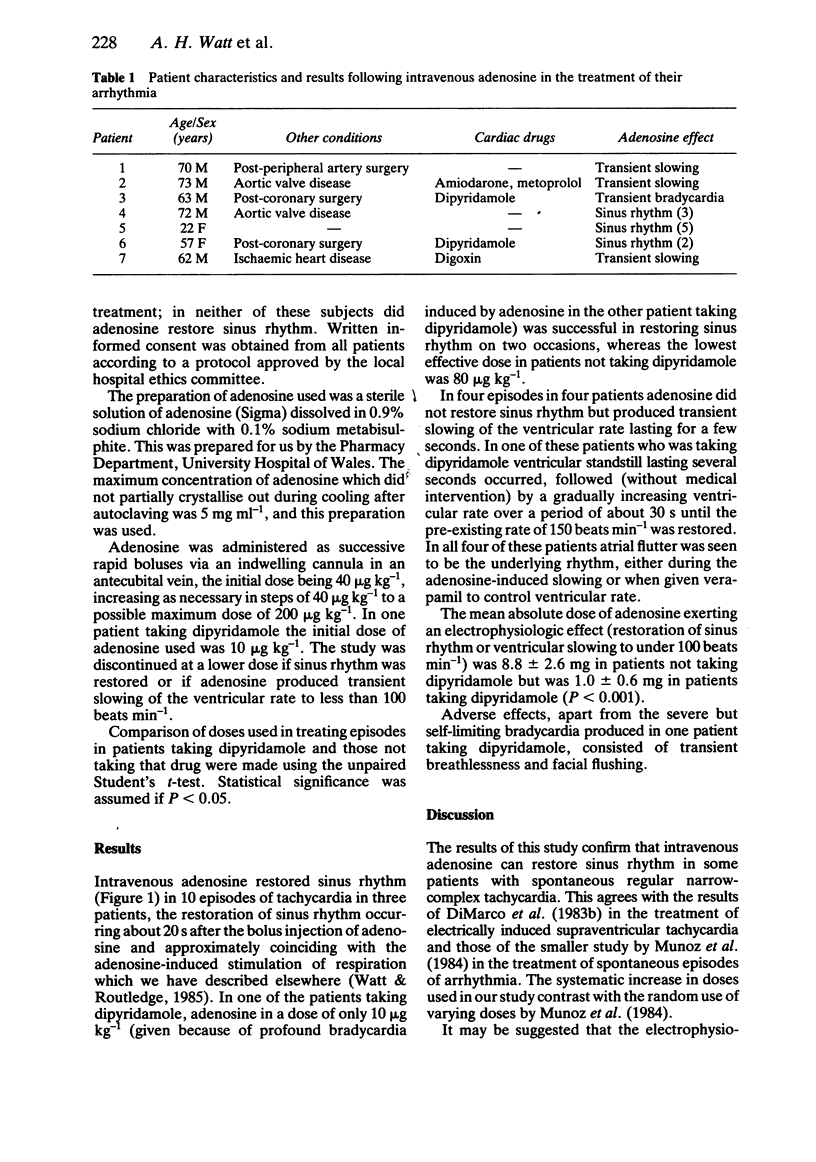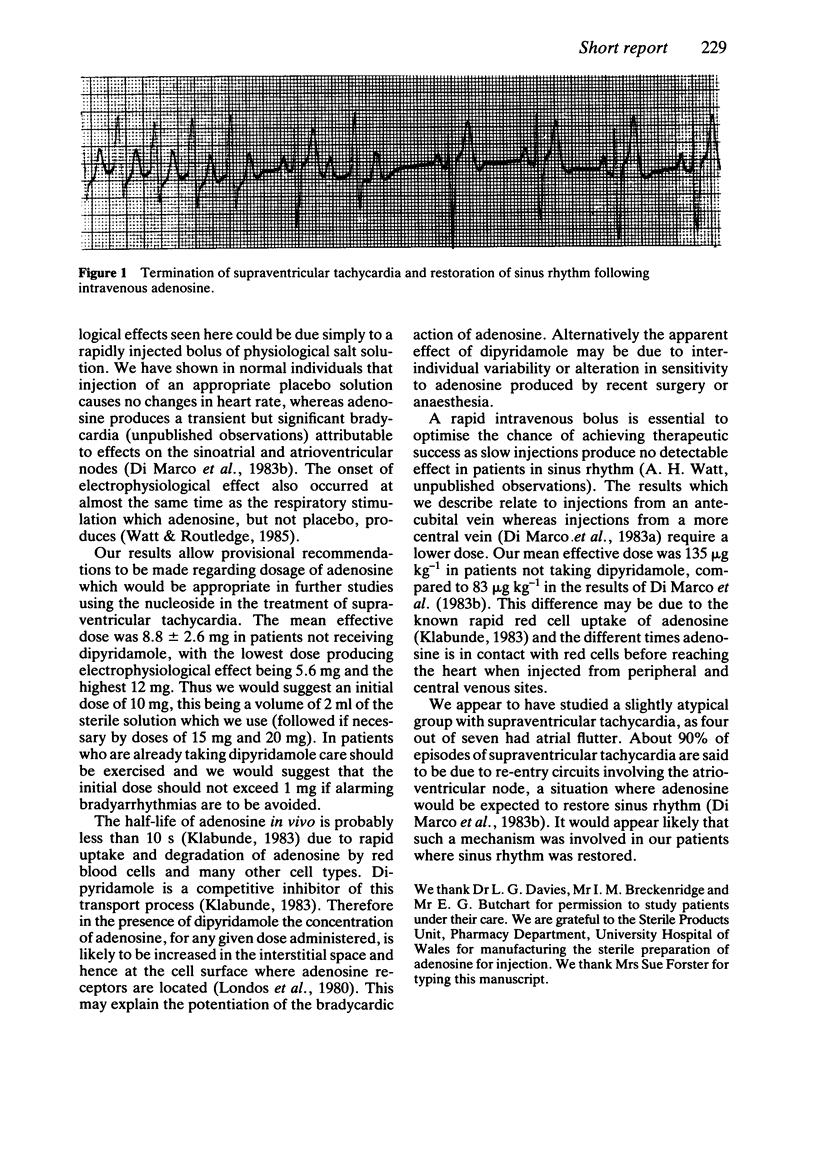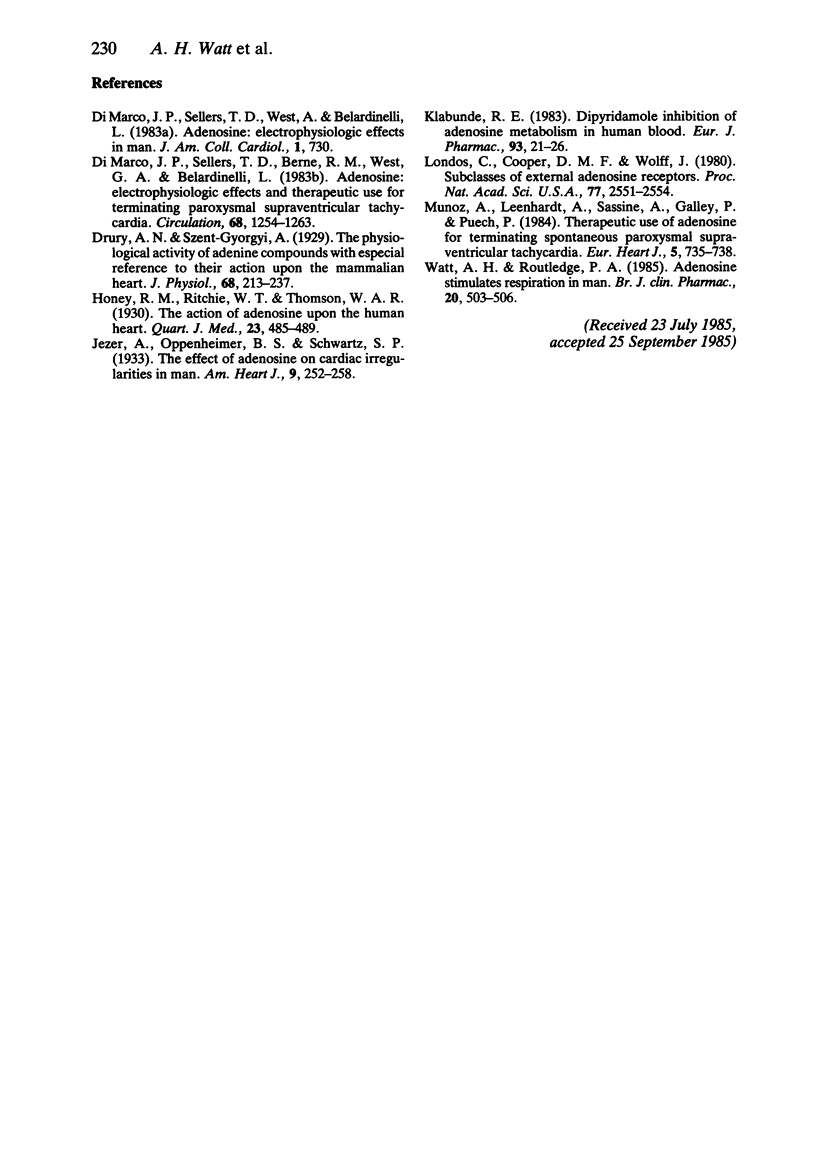Abstract
Increasing doses of adenosine were given by rapid intravenous bolus to seven patients with spontaneous supraventricular tachycardia. Adenosine restored sinus rhythm in 10 of 14 episodes of narrow complex tachycardia. In those patients in whom adenosine produced only transient ventricular slowing the underlying rhythm was atrial flutter. Transient dyspnoea occurred in all patients. In two patients taking dipyridamole the mean dose of adenosine which produced an electrophysiologic effect (restoration of sinus rhythm or ventricular slowing to under 100 beats min-1) was 1.0 +/- 0.52 mg, whereas in other patients the mean dose was 8.8 +/- 2.6 mg, suggesting potentiation of the action of adenosine by dipyridamole.
Full text
PDF



Selected References
These references are in PubMed. This may not be the complete list of references from this article.
- DiMarco J. P., Sellers T. D., Berne R. M., West G. A., Belardinelli L. Adenosine: electrophysiologic effects and therapeutic use for terminating paroxysmal supraventricular tachycardia. Circulation. 1983 Dec;68(6):1254–1263. doi: 10.1161/01.cir.68.6.1254. [DOI] [PubMed] [Google Scholar]
- Drury A. N., Szent-Györgyi A. The physiological activity of adenine compounds with especial reference to their action upon the mammalian heart. J Physiol. 1929 Nov 25;68(3):213–237. doi: 10.1113/jphysiol.1929.sp002608. [DOI] [PMC free article] [PubMed] [Google Scholar]
- Klabunde R. E. Dipyridamole inhibition of adenosine metabolism in human blood. Eur J Pharmacol. 1983 Sep 16;93(1-2):21–26. doi: 10.1016/0014-2999(83)90026-2. [DOI] [PubMed] [Google Scholar]
- Londos C., Cooper D. M., Wolff J. Subclasses of external adenosine receptors. Proc Natl Acad Sci U S A. 1980 May;77(5):2551–2554. doi: 10.1073/pnas.77.5.2551. [DOI] [PMC free article] [PubMed] [Google Scholar]
- Munoz A., Leenhardt A., Sassine A., Galley P., Puech P. Therapeutic use of adenosine for terminating spontaneous paroxysmal supraventricular tachycardia. Eur Heart J. 1984 Sep;5(9):735–738. doi: 10.1093/oxfordjournals.eurheartj.a061734. [DOI] [PubMed] [Google Scholar]
- Watt A. H., Routledge P. A. Adenosine stimulates respiration in man. Br J Clin Pharmacol. 1985 Nov;20(5):503–506. doi: 10.1111/j.1365-2125.1985.tb05108.x. [DOI] [PMC free article] [PubMed] [Google Scholar]


